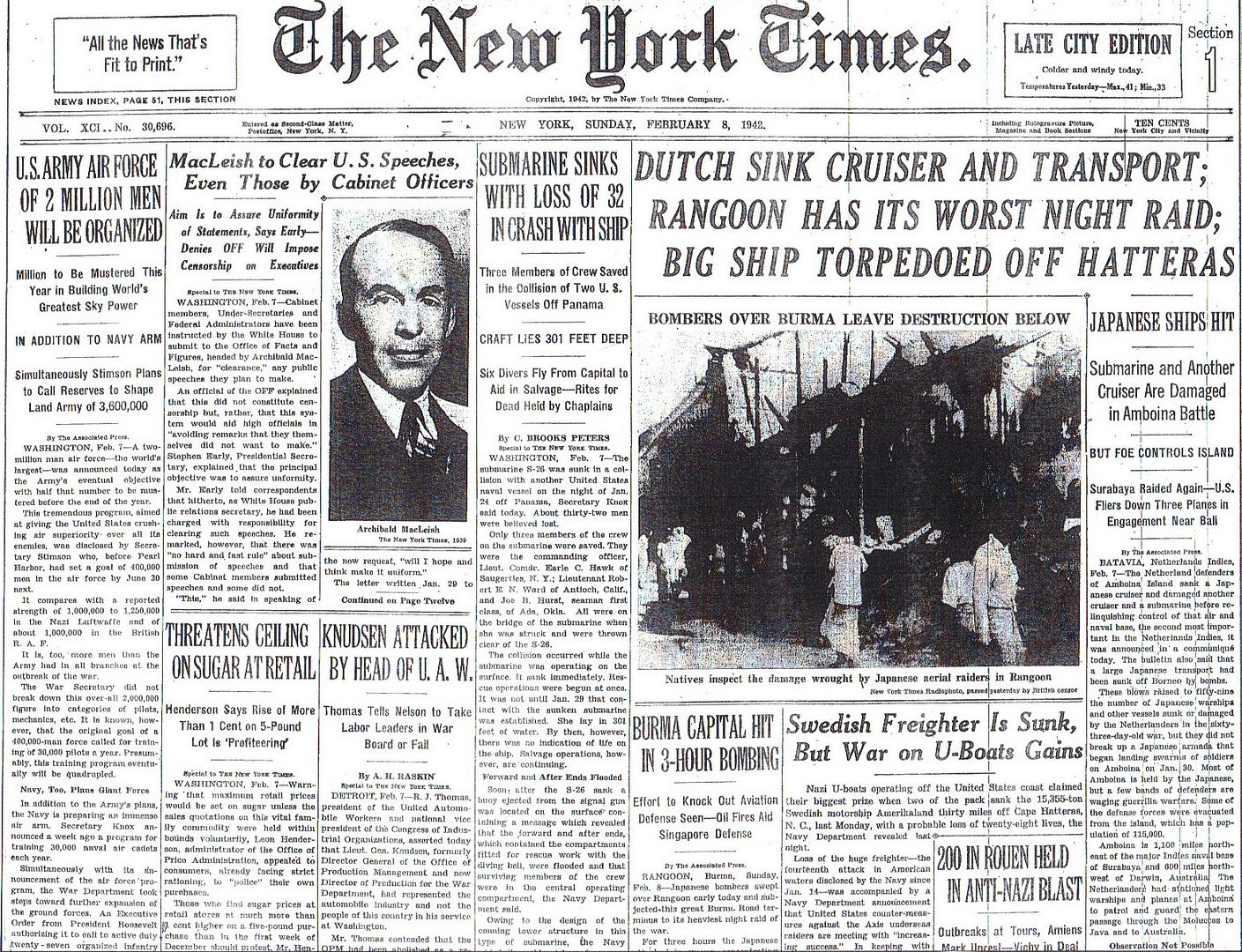
Posted on 02/08/2012 4:38:36 AM PST by Homer_J_Simpson

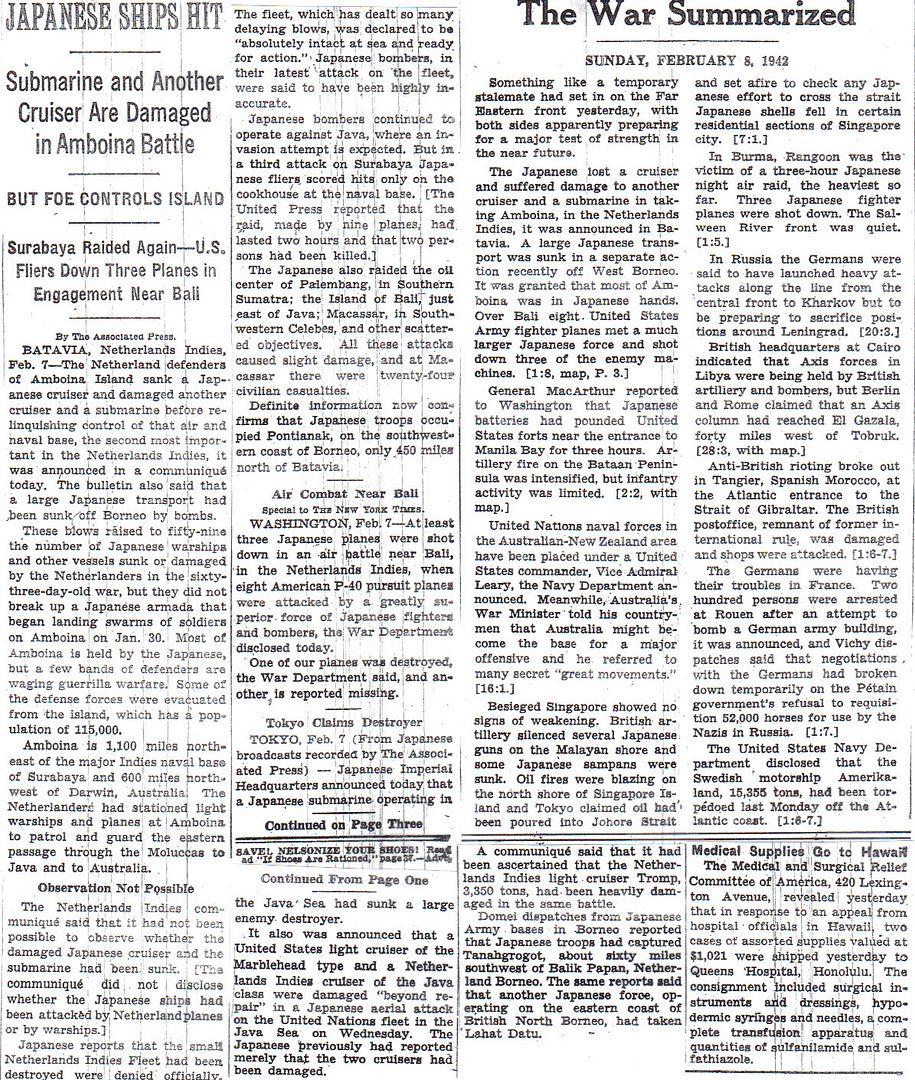
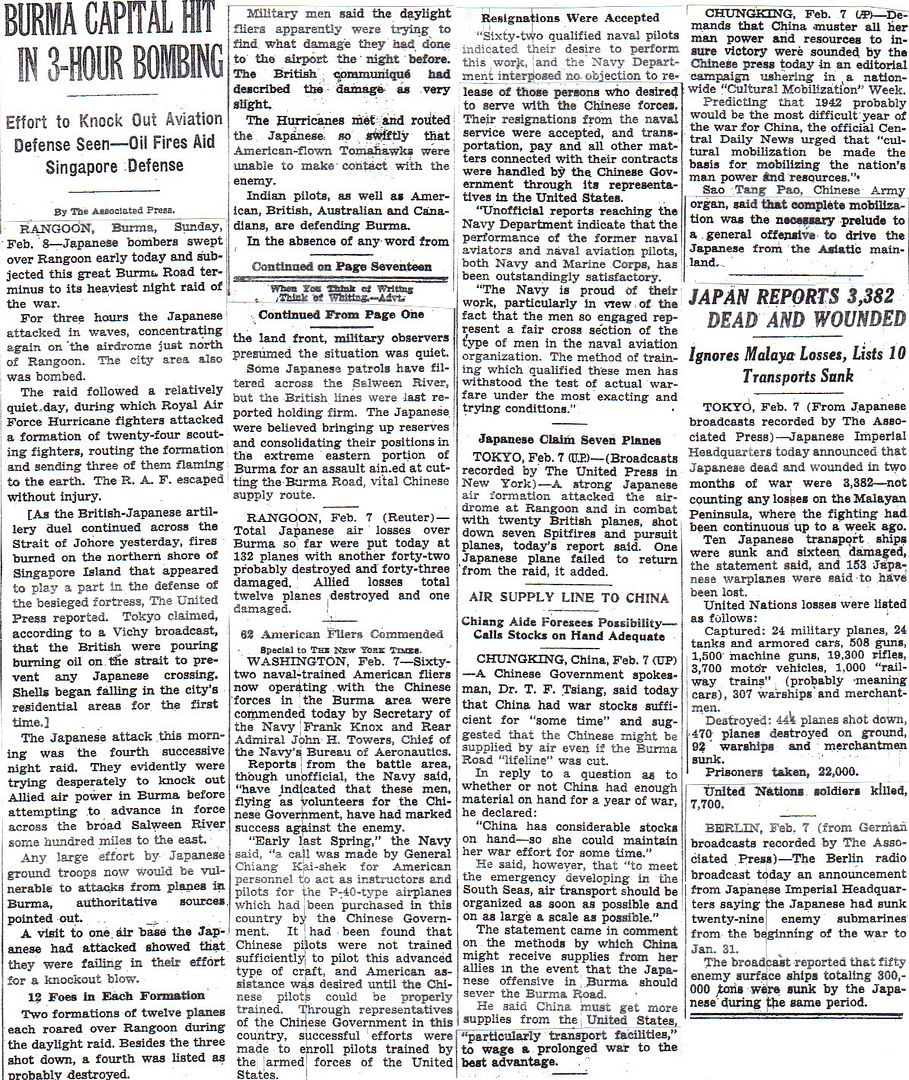

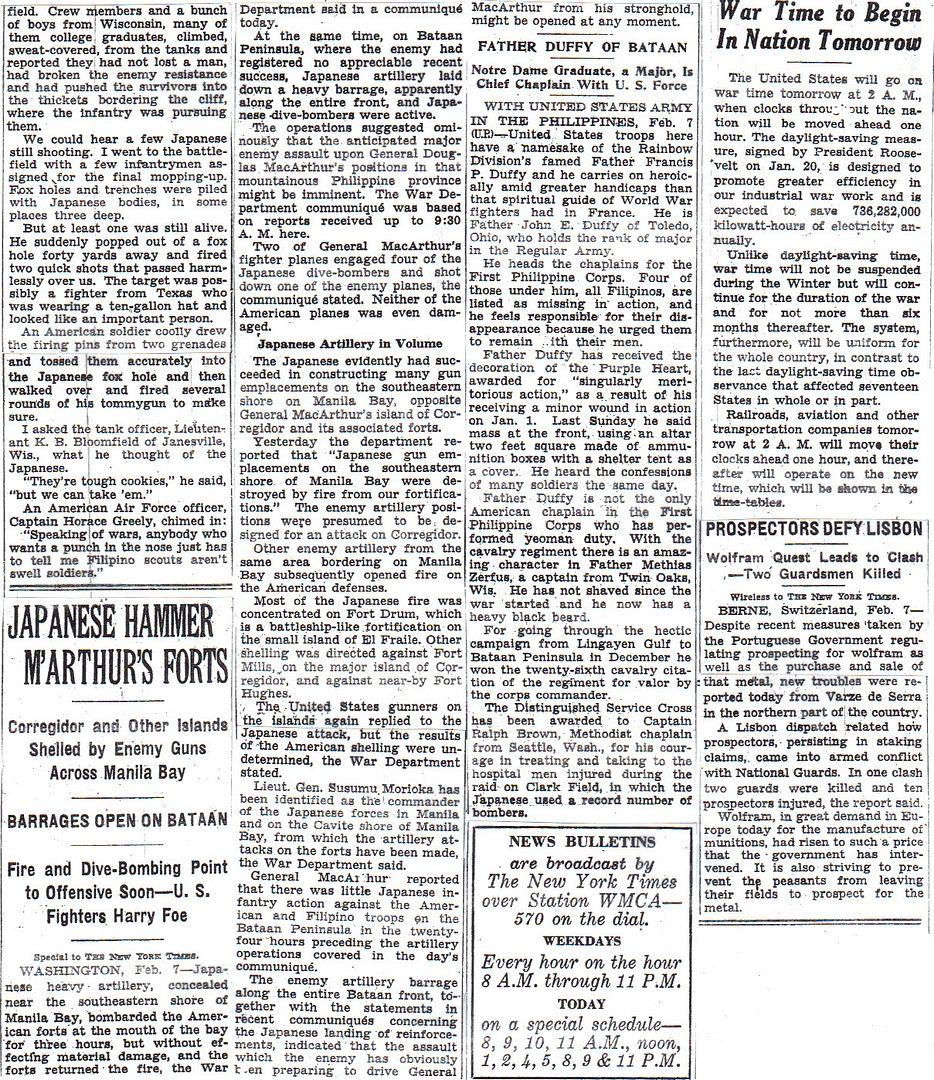
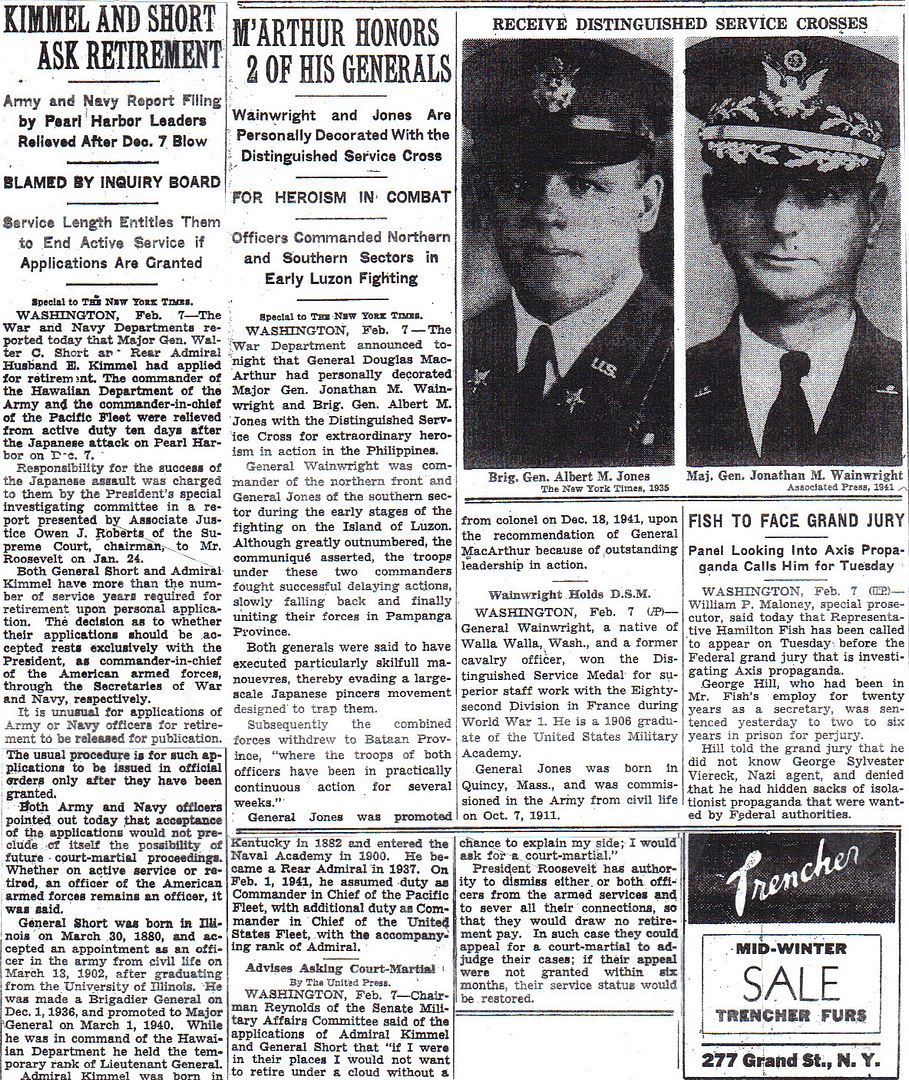
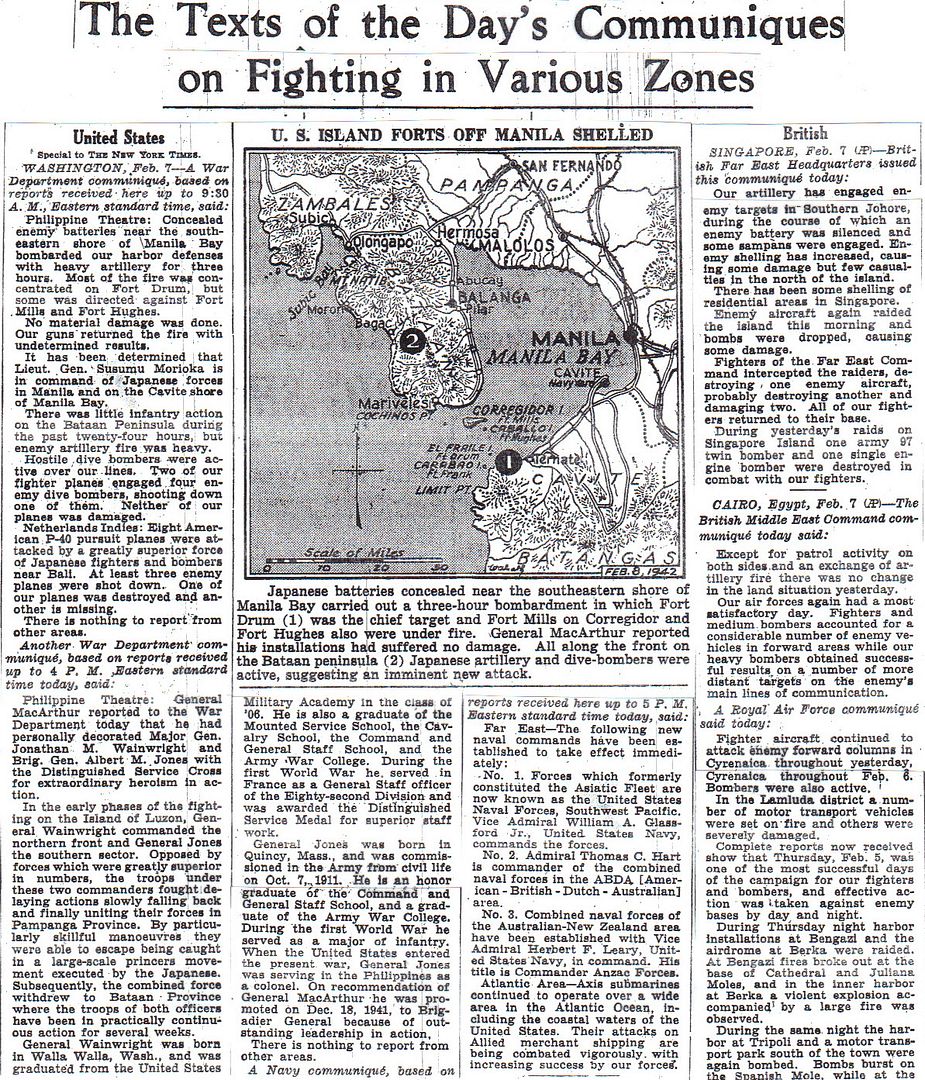



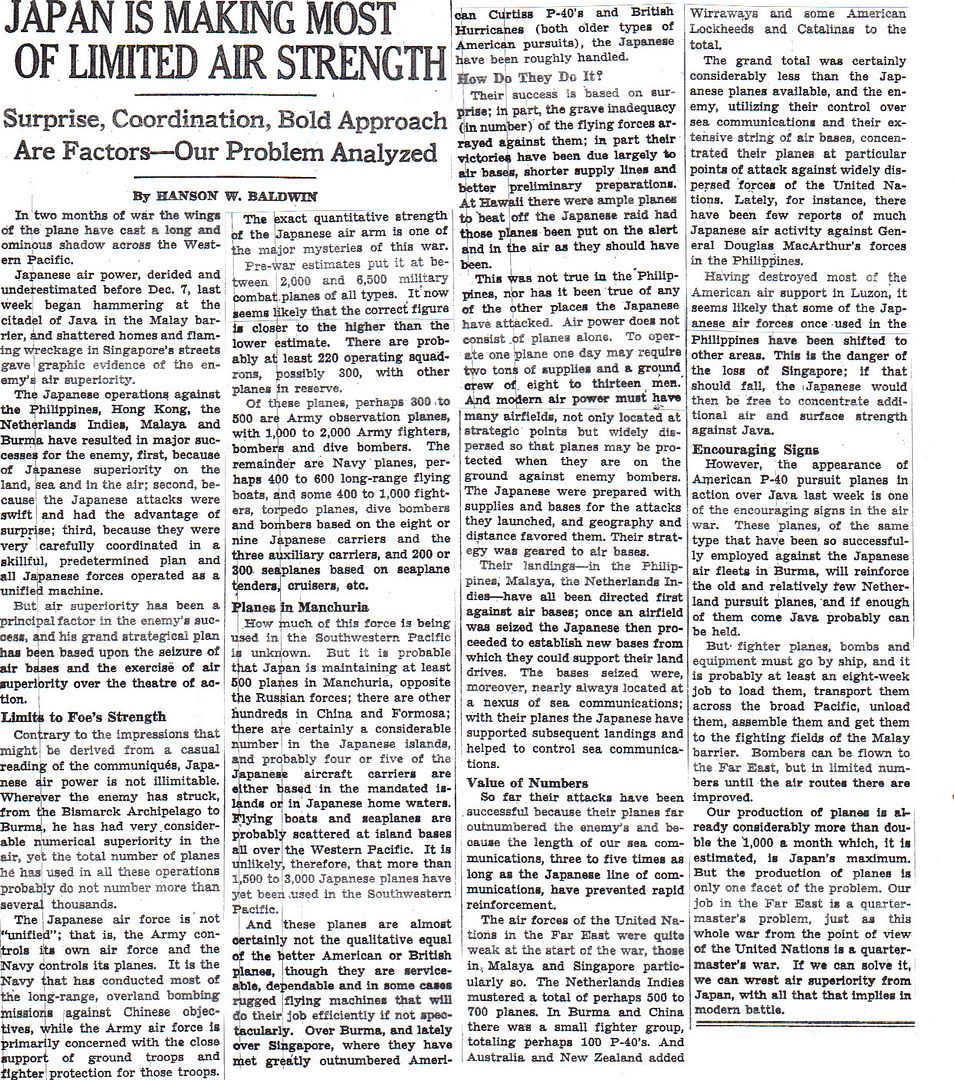
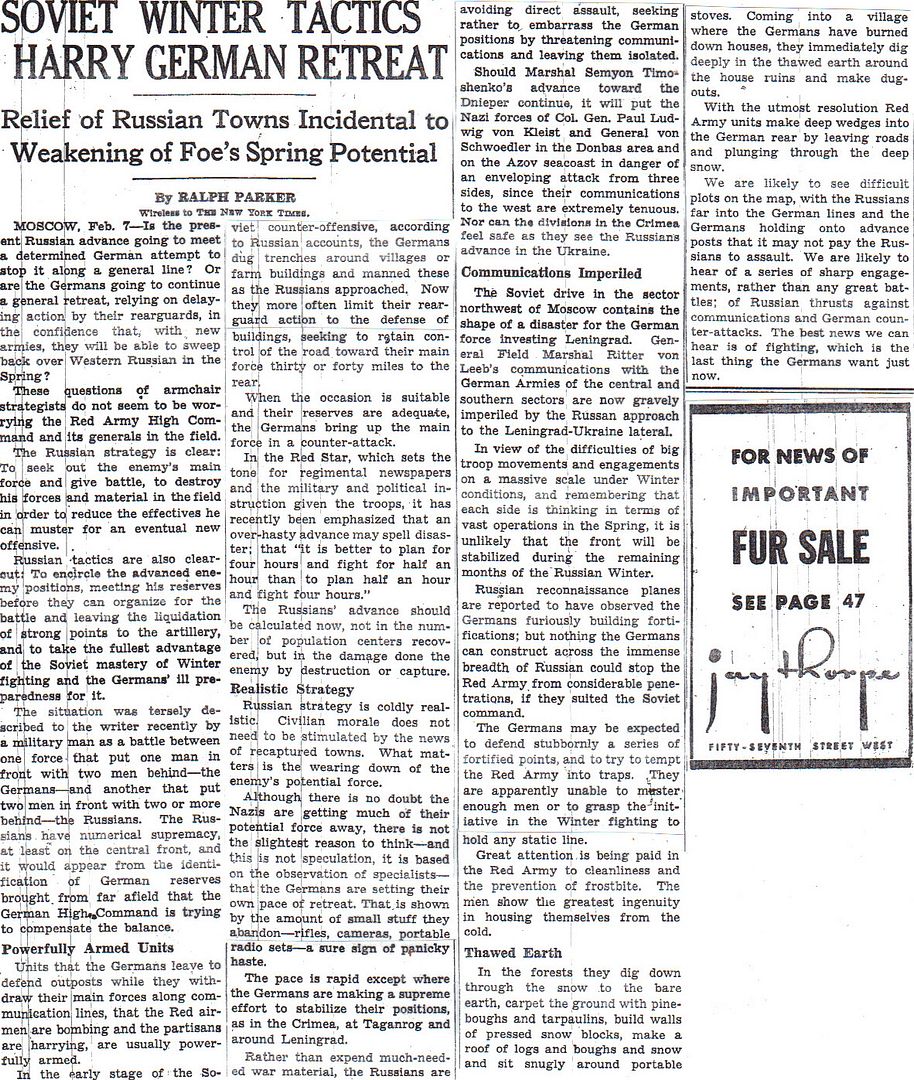


The News of the Week in Review
Twenty News Questions – 9
Public Slow to Grasp Spirit of War Urgency (Krock) – 10
Japan is Making Most of Limited Air Strength (Baldwin – 11
Soviet Winter Tactics Harry German Retreat (Parker) – 12
Answers to Twenty News Questions – 14
http://www.onwar.com/chrono/1942/feb42/f08feb42.htm
Japanese invade Singapore after bombing it
Sunday, February 8, 1942 www.onwar.com
Results of Japanese air raid on SingaporeIn Malaysia... The Japanese invade Singapore after a day of air bombardment. Troops of the Japanese 5th, 18th and Imperial Guards Divisions land on the northwest of the island in the area defended by the 22nd Australian Brigade. The garrison at this point is almost 85,000 strong including support troops. The Japanese have successfully avoided the large guns at the fortress on Singapore as they were designed to defend against a direct sea borne attack.
In the Philippines... Japanese General Homma, halts his main attacks to await further reinforcement. Some heavy fighting, however, continues.
http://homepage.ntlworld.com/andrew.etherington/month/thismonth/08.htm
February 8th, 1942
UNITED KINGDOM: The third contingent of Canadian troops arrives in Great Britain (Jack McKillop)
GERMANY: Berlin: Hitler has chosen his architect friend, 36-year-old Albert Speer, to succeed Fritz Todt as minister for armaments and war production. Todt was killed today when his plane crashed on take-off after a visit to the Führer. Speer’s task is to increase arms production by 50%; he aims to do so by forcing prisoners of war to work in factories. Before his new appointment he was working on plans for a post-war Berlin worthy of the 1,000-year Reich.
U-615, U-616 launched. (Dave Shirlaw)
U.S.S.R.: Demyansk: General Kurochkin’s troops encircle 90,000 German soldiers of six divisions of the 2nd Armeekorps, as well as a number of auxiliary RAD (Reichs Labour Service), and Organisation TODT units The encircled (’einegekesselt’) German units were the: 12th, 30th, 32nd, 123rd, 290th Infantry, and the SS-TK (’Totenkopf’) divisions. These encircled units, while considerably weakened by combat attrition, are successfully supplied with adequate amounts of food and munitions by air from the Luftwaffe to ably fend off repeated and unceasing Soviet attacks to reduce the pocket for well over a month of sustained attacks, with heavy casualties on both sides. (Russ Folsom)
SINGAPORE: The Japanese intensify their artillery bombardment and at about 2230 hours begin landing in force on the northwestern coast of the island in the Australian sector; in this sector, three depleted Australian battalions are facing 16 Japanese battalions. The first two waves of assault craft are almost annihilated, mainly by machine gun fire, but the third wave manages to land in force and fierce hand-to-hand combat ensues. Despite opposition at the beaches, the Japanese gain a firm bridgehead and start toward Tengah airfield, driving a wedge in the Australian line in the West Area. (Jack McKillop)
COMMONWEALTH OF THE PHILIPPINES: Lieutenant General HOMMA Masaharu, Commander of the Japanese 14th Army, orders a general withdrawal northward to more favourable positions where troops can be rested and reorganized while awaiting reinforcements for the final assault on Bataan. The Allied I Corps continues their battle to destroy Little and Big Pockets and completely encircles the latter. The Japanese escape from Little Pocket through a small gap on the east during the night of the 8-9th. In the South Sector, resistance on Quinauan Point ends after armed motor launches from submarine tender USS Canopus (AS-9) neutralize the beaches, then land a party of the ground echelon of the 21st Pursuit Squadron (Interceptor), which works inland and meets the Philippine Scouts (PS) pushing toward the beaches. A company of the 57th Infantry, PS, and a platoon of 37-mm. guns are released at Quinauan for action against the Japanese in the Anyasan-Silaiim sector. The Japanese make a final attempt to withdraw their force from southwestern coast by water and succeed in rescuing 34. (Jack McKillop)
Filipino President Manuel Quezon, watching his country disintegrate under bombs and occupation, asks President Franklin D. Roosevelt to grant the Philippines their independence and declare it a neutral area. FDR, seeing the absurdity of the idea, gives General Douglas MacArthur, Commanding General, US Army Forces, Far East, the power to surrender Filipino troops, but not American. This calls Quezon’s bluff. Privately FDR tells his advisors that the idea the Japanese would recognize an independent Philippine nation’s neutrality is absurd. (Jack McKillop)
BORNEO: Japanese troops land at Bandjermasin, a small town in southeast Borneo.
MIDWAY: Japanese submarine HIJMS I-69, which has been reconnoitring the atoll since 21 January, shells the islands. (Jack McKillop)
NETHERLANDS EAST INDIES: Nine USAAF 5th Air Force B-17 Flying Fortresses based at Singosari Airdrome, Java, attempt to bomb Kendari Airdrome on Celebes. The flight is intercepted by Japanese fighters over the Java Sea and six B-17s are lost. (Jack McKillop)
Off Makassar City on Celebes Island, the submarine USS S-37 (SS-142) torpedoes and sinks Japanese destroyer HIJMS Natsushio. (Jack McKillop)
NEW ZEALAND: The government announce a potato shortage, which will continue through 1942. (Jack McKillop)
U.S.A.: The annual baseball game between major leaguers and prisoners is played at California’s Folsom prison. The game is stopped when it’s discovered that two prisoners have escaped. With the pros leading 24-5 at the end of seven innings, the game ends and guards go after the two lifers, who are found three hours later. (Jack McKillop)
A congressional committee recommends that all Japanese-Americans on the west coast be interned in camps located at least 500 miles (805 kilometres) inland. (Jack McKillop)
ATLANTIC OCEAN: At 1035, the unescorted SS Ocean Venture was hit by one torpedo from U-108 near Cape Hatteras and stopped. The crew abandoned ship after being hit amidships by a coup de grâce, but the vessel remained afloat and sank by the bow following a second coup de grâce at 1116. 29 crewmembers and two gunners were lost. The master and 13 crewmembers were picked up by USS Roe and landed at Norfolk, Virginia. (Jack McKillop and Dave Shirlaw)
Disclaimer: Opinions posted on Free Republic are those of the individual posters and do not necessarily represent the opinion of Free Republic or its management. All materials posted herein are protected by copyright law and the exemption for fair use of copyrighted works.